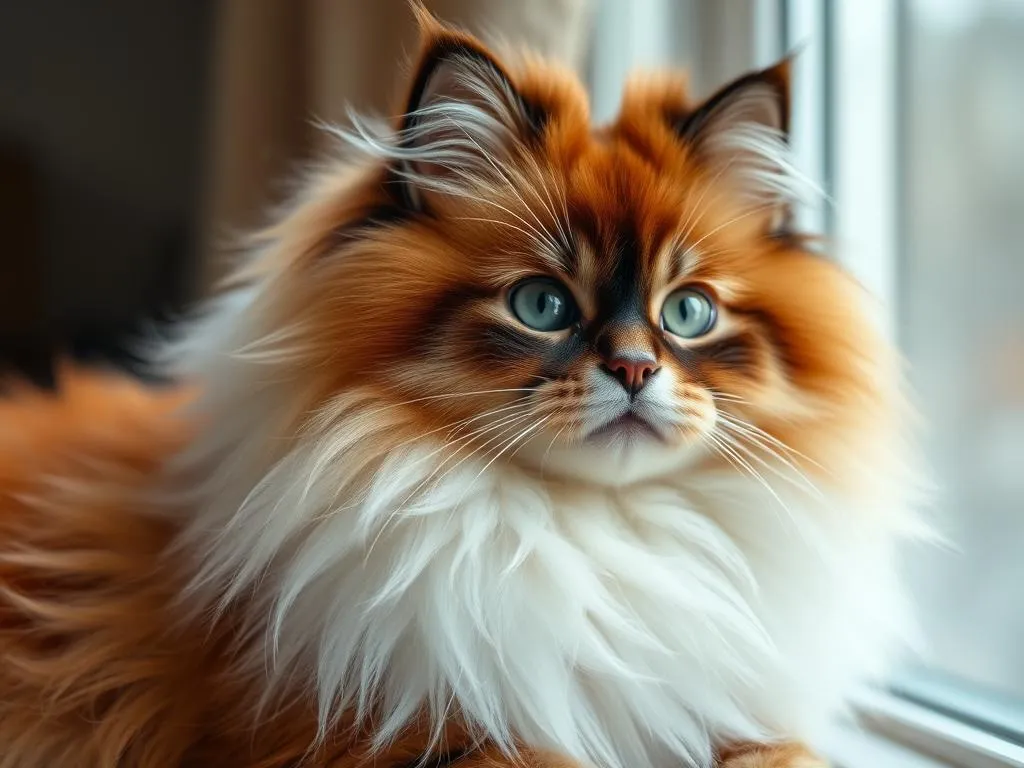
Understanding the dynamics between different pet species is crucial for maintaining a harmonious household. Among the smaller dog breeds, Pomeranians have gained immense popularity due to their fluffy appearance and lively personalities. However, many prospective pet owners wonder, will a Pomeranian be good with my cat? This article delves into the temperament of Pomeranians and explores their compatibility with feline friends.
Understanding Pomeranians
Breed Characteristics
Pomeranians are small, fluffy dogs that typically weigh between 3 to 7 pounds. Their compact size makes them an ideal choice for apartment living or homes with limited space. One of the most striking features of Pomeranians is their double coat, which is thick and requires regular grooming to prevent matting and maintain its fluffy appearance. Common colors include orange, black, cream, and a variety of patterns such as sable and merle.
Temperament and Behavior
Pomeranians are known for their vibrant and spirited personalities. They are often described as playful, curious, and intelligent, making them an engaging companion. Pomeranians have an average activity level and enjoy playtime, but they also appreciate cuddling. Their socialization tendencies with other pets can vary; while some Pomeranians are friendly and outgoing, others may be more reserved or territorial.
Factors Influencing Dog-Cat Compatibility
Individual Temperament
When considering whether a Pomeranian will be good with my cat, it’s essential to recognize that individual temperament plays a significant role. While general breed traits provide insight, each dog has its unique personality. For instance, some Pomeranians may have a laid-back demeanor and get along wonderfully with cats, while others may exhibit more assertive or anxious traits, impacting their interactions with felines.
Socialization and Training
Early socialization is critical for fostering a peaceful coexistence between a Pomeranian and a cat. Introducing a puppy to various environments, sounds, and animals helps them develop positive associations with other pets. Training is equally important; utilizing effective techniques, such as positive reinforcement, can help a Pomeranian learn appropriate behavior around a cat.
Environmental Factors
The living environment also influences how a Pomeranian and a cat interact. A spacious home with designated areas for each pet can help reduce potential conflicts. Understanding existing pet dynamics is crucial; if a cat perceives a Pomeranian as a threat, it may lead to stress or aggression. Establishing a hierarchy and ensuring each pet feels safe can contribute to a more harmonious relationship.
Pomeranians and Cats: Case Studies
Positive Interactions
Many Pomeranian owners report successful friendships between their dogs and cats. For instance, a family with a Pomeranian named Bella shared that after a gradual introduction, their cat, Whiskers, and Bella became inseparable. They often play together, with Bella gently nudging Whiskers and encouraging play. Key strategies included allowing both pets to explore each other’s spaces gradually and supervising their interactions until trust was established.
Challenges and Solutions
Introducing a Pomeranian to a cat can come with challenges. Common issues include territorial behavior from the cat or overly enthusiastic behavior from the dog. One owner noted that her Pomeranian, Max, would bark excessively at her cat, leading to tension. To address this, she implemented a structured introduction process, allowing Max to observe the cat from a distance, gradually decreasing the space between them as they became more comfortable.
Tips for Introducing a Pomeranian to a Cat
Pre-Introduction Preparations
Creating safe spaces for both pets is crucial before the introduction. Designate areas where each pet can retreat if they feel overwhelmed. Tools such as leashes and baby gates can help manage initial interactions and prevent any aggressive behaviors. Additionally, providing separate feeding areas can reduce competition for resources.
The Introduction Process
Introducing a Pomeranian to a cat should be done gradually. Start by allowing them to sniff each other’s belongings to become familiar with each other’s scent. Once they seem comfortable, proceed to supervised face-to-face meetings. It’s essential to observe their body language; signs of tension, such as raised hackles or hissing from the cat, indicate that they may need more time apart.
- Start slow: Allow them to see each other from a distance.
- Supervise: Keep interactions short and positive.
- Reward calm behavior: Use treats and praise to reinforce positive interactions.
- Be patient: Some pets may take longer to adjust than others.
Post-Introduction Care
Monitoring interactions after the initial introduction is vital. Continue to supervise their playtime, and be ready to intervene if any aggressive behavior arises. Adjustments to routines may be necessary; for example, if the Pomeranian becomes overly excited around the cat, consider providing more exercise to help them expend energy.
Conclusion
In summary, whether a Pomeranian will be good with my cat largely depends on individual personalities, early socialization, and the living environment. Understanding each pet’s temperament and taking a thoughtful approach to introductions can create a peaceful multi-pet household. Ultimately, responsible pet ownership involves considering the needs and personalities of all animals involved, fostering a loving environment where both dogs and cats can thrive.
Frequently Asked Questions (FAQs)
Can Pomeranians and cats live together?
Yes, Pomeranians and cats can live together harmoniously with proper introductions and socialization. Each pet’s personality will play a significant role in their compatibility.
What are the signs of a Pomeranian being aggressive towards a cat?
Signs of aggression may include barking, growling, lunging, or attempting to chase the cat. It’s essential to intervene and redirect their attention to prevent escalation.
How long does it take for a Pomeranian to get used to a cat?
The time it takes for a Pomeranian to adjust to a cat can vary. Some may bond within days, while others might take weeks or even months. Patience and consistency are key.
What other dog breeds are known to get along well with cats?
Breeds such as Cavalier King Charles Spaniels, Basset Hounds, and Labrador Retrievers are often known for their friendly and easygoing nature with cats. However, individual temperament is always the most important factor in compatibility.
By understanding the dynamics of introducing a Pomeranian to a cat and being mindful of their individual needs, pet owners can foster a loving and peaceful environment for both pets.









